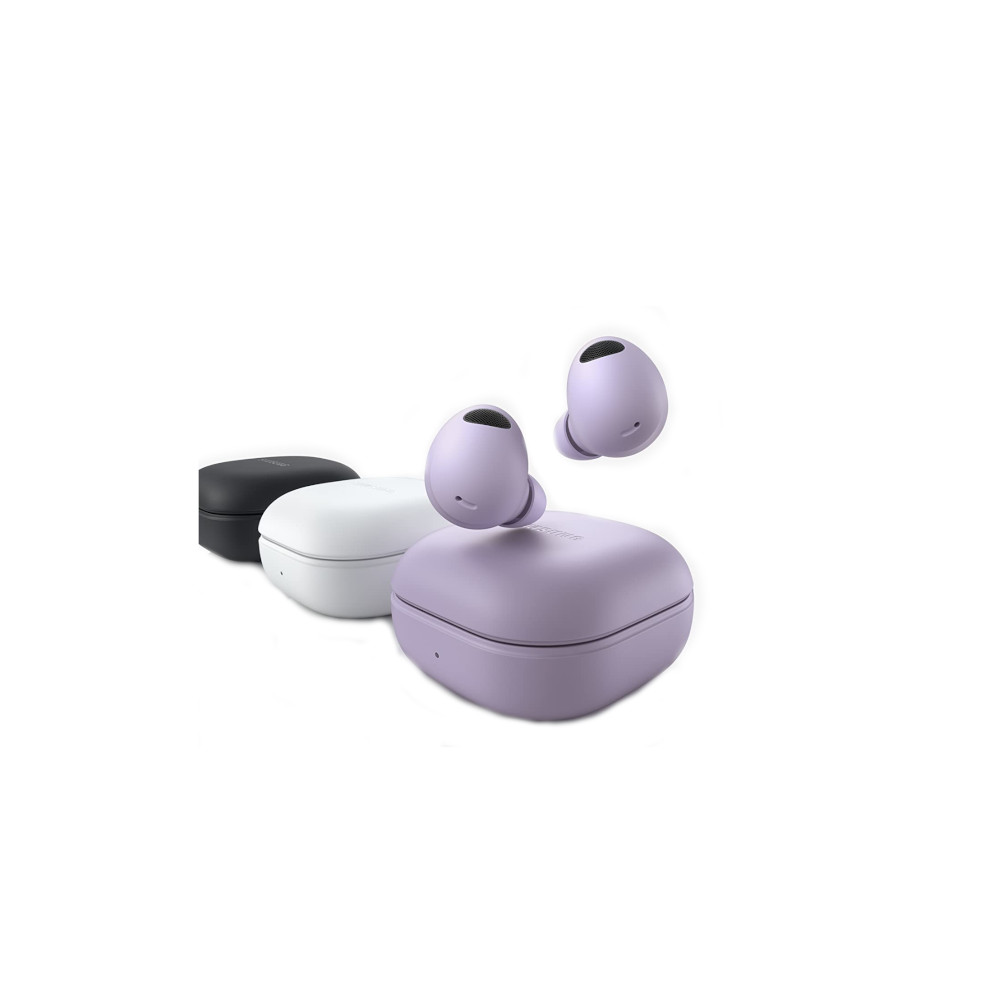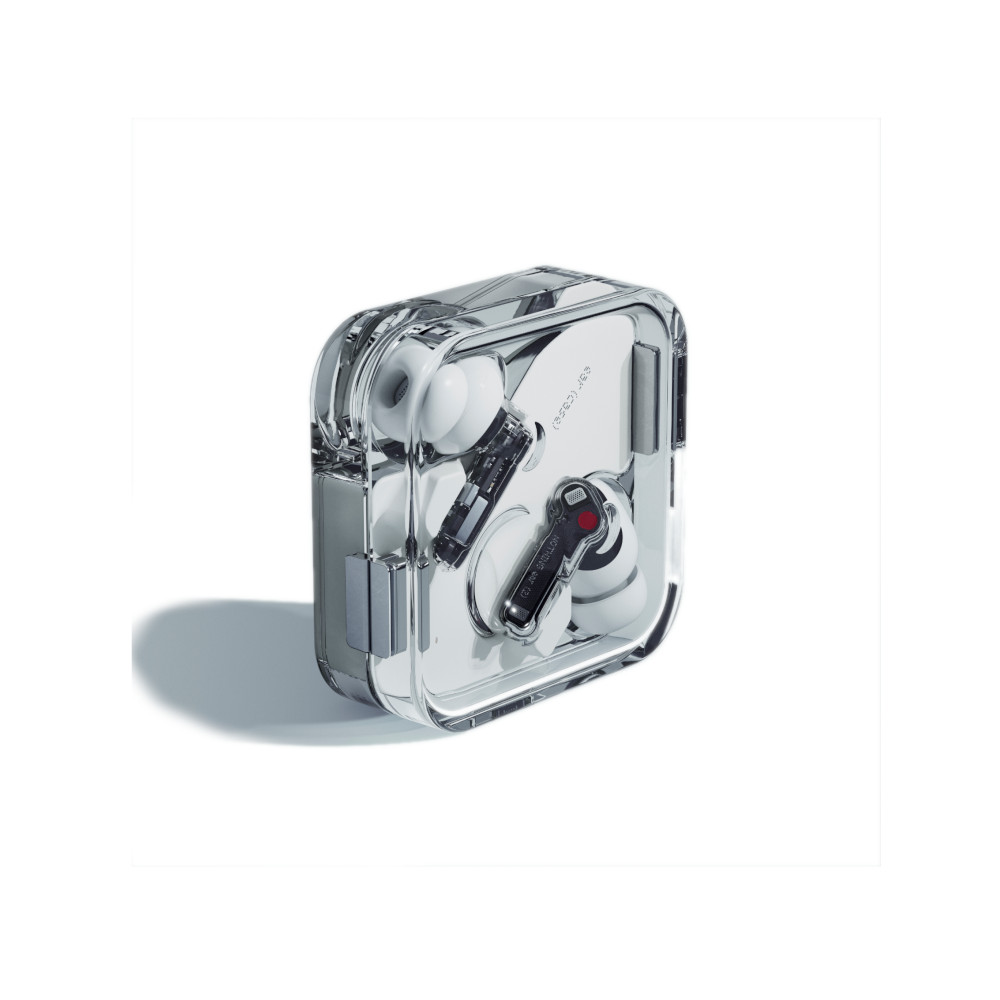All products featured are independently chosen by us. However, SoundGuys may receive a commission on orders placed through its retail links. See our ethics statement.
Apple AirPods Pro (2nd generation) vs Nothing Ear (2)
Published onMay 2, 2024



Everyone wants to take a shot at the king, and in the true wireless earbud world that’s currently the Apple AirPods Pro (2nd generation). Nothing has been making a case for its inclusion in the discussion for best earbuds, but is it deserved? We spent several weeks with both the Apple AirPods Pro (2nd generation) and Nothing Ear (2) and found out everything you need to know. Make sure to also take a look at our breakdown of the newer Nothing Ear vs Apple AirPods Pro (2nd generation).
Editor’s note: this article was updated on May 2, 2024, to include the versus article with the new Nothing Ear vs the Apple AirPods Pro (2nd generation).
What’s it like to use the Apple AirPods Pro (2nd generation) compared to the Nothing Ear (2)?
Both the Apple AirPods Pro (2nd generation) and Nothing Ear (2) have a lot of time and effort dedicated to design, so it’s not surprising, then, that they have very similar forms. Each set of earbuds is based around the lollipop design of the original AirPods, with pinch controls hidden in the protruding stick. The short nozzles of each product have silicone tips, and are meant to nestle into your ear canal with a shallow seal. Both products also offer an ear tip fit test to ensure you can hear your tunes optimally, but only the Apple AirPods Pro (2nd generation) has a large selection of aftermarket ear tips to choose from online should you find that you need something other than silicone tips.

As the flagship models for both Nothing and Apple, the Nothing Ear (2) and Apple AirPods Pro (2nd generation) bear price tags and features to match that level of prominence. You may find you don’t actually end up using all the bells and whistles available to you, but that’s okay. It’s better to have things like an app (or your operating system) to supplement the functionality of your earbuds even if you don’t end up using the spatial audio, equalizer, or voice assistant integration.
Though the earphones are quite similar, people who are less gentle with their toys will much prefer the Nothing Ear (2) over the Apple AirPods Pro (2nd generation), as it boasts an IP54 rating, while the Apple competitor only has an IPX4 rating. While that means both stand up equally well to moisture, only the Nothing Ear (2) is rated against dust ingress.

The most likely deciding factor between two products isn’t even related to the headphones themselves—in this case Android users may have more trouble deciding between the two. The baseline aspects of the Apple AirPods Pro (2nd generation) like sound, ANC, and build quality are very impressive. However, it relies on iOS to grant virtually all its additional features (basically anything you can’t do with the default on-ear control settings), so Android users won’t benefit as much from buying it. Basically, people without iPhones will have to weigh the importance of hardware excellence against the software features of the Nothing Ear (2)—not that its hardware is anything to sneeze at.
How do you control the Apple AirPods Pro (2nd generation) and Nothing Ear (2)?
Controls for both the Apple AirPods Pro (2nd generation) and Nothing Ear (2) are relatively straightforward, with the former relying on a mix of physical control via pinching the ear stems. You can customize the exact function of the tap-to-hold function through the settings app of the iPhone, but for Android this isn’t customizable.
Apple AirPods Pro (2nd generation) controls:
| INPUT (stems) | ACTION |
|---|---|
One press | Play/pause/answer call |
Two presses | Next track |
Three presses | Previous track |
Press and hold | Toggle ANC/Adaptive Transparency modes |
Swipe up/down | Increase/decrease volume |
"Hey Siri" | Change volume, request directions, playback control, receive messages, and more |
The Nothing Ear (2) offers a customizable control in the double-tap and hold via the Nothing X app. The actual pressure control point is a little higher up on the stem than you might expect, so those with longer lobes may end up having to dig their finger in between the ear and the stem a bit to reach it.
Nothing Ear (2) controls:
| ACTION | Left earbud | Right earbud |
|---|---|---|
| ACTION One pinch | Left earbud Play / pause Answer phone call / end call | Right earbud Play / pause Answer phone call / end call |
| ACTION Two pinches | Left earbud Next track Decline incoming call | Right earbud Next track Decline incoming call |
| ACTION Three pinches | Left earbud Skip to previous track | Right earbud Skip to previous track |
| ACTION One pinch and hold | Left earbud ANC on / transparency mode | Right earbud ANC on / transparency mode |
| ACTION Two pinches and hold | Left earbud Unassigned | Right earbud Unassigned |
Should you use the apps of either Apple AirPods Pro (2nd generation) or Nothing Ear (2)?

The whether you use iOS or Android makes a lot of difference here, as there is no native app for the Apple AirPods Pro (2nd generation) on Android. Additionally, many of the features and customizations for the Apple AirPods Pro (2nd generation) live in iOS for Apple devices. Consequently, there’s really nothing to download for that product.

On the other hand, the Nothing X app for the Nothing Ear (2) is quite useful, though slightly less convenient than being baked into the operating system of your smartphone. The app offers a 3-band equalizer, adjustable ANC, and the occasional notification for firmware updates. The app is pretty straightforward, though if you don’t like sharing personal info at all you could probably skip downloading it.
How do the Apple AirPods Pro (2nd generation) and Nothing Ear (2) connect?

As true wireless earphones, both the Apple AirPods Pro (2nd generation) and Nothing Ear (2) connect to their source devices via a wireless Bluetooth connection. The Apple AirPods Pro (2nd generation) over Bluetooth 5.2, and the Nothing Ear (2) over Bluetooth 5.3. While both use the same codecs to transmit audio, the Nothing Ear (2) also supports the LHDC 5.0 codec, which isn’t widely adopted yet, but capable of transmitting 24-bit/95kHz audio.
Given very few smartphones support LHDC 5.0, the best available codec you will probably have access to for both the Apple AirPods Pro (2nd generation) and Nothing Ear (2) for Android and iOS is AAC. You shouldn’t notice any appreciable latency with either product on either platform. However, you may notice a slight delay over SBC, peaking at around 340ms for the Nothing Ear (2).
To pair the AirPods Pro (2nd generation) to an iPhone, follow these steps.
- Unlock your iPhone and open the Settings app.
- Select the Bluetooth menu and turn the toggle on (it will turn green).
- Open the AirPods Pro (2nd generation) case near your iPhone.
- Wait for a pop-up card to appear on your iPhone and press “Connect.”
Once paired to your iPhone, the second-gen AirPods Pro will automatically be recognized on any source device associated with your iCloud account. This association also enables automatic device switching between Apple devices.
To pair the AirPods Pro (2nd generation) to an Android device, follow these steps.
- Unlock your phone and open Settings > Connected Devices > Bluetooth.
- Open the AirPods (2nd generation) case near your phone.
- Press and hold the white button on the back of the case, and wait until your phone discovers the AirPods Pro.
- Tap on “AirPods Pro (2nd generation)” to pair it to your phone.
For Android users the Nothing Ear (2) has Google Fast Pair. You can open the case with the buds inside and hold it near your Android device to prompt pairing. There’s also Microsoft Swift Pair where applicable too.
If you have another device, like an iPhone, here’s how to pair the Nothing Ear (2). You can also try pairing using the Nothing X app, but this works whether you have the app or not.
- Turn on Bluetooth.
- Open the Nothing Ear (2) case with the buds inside.
- Hold down the button on the Nothing Ear (2) case until the indicator light pulses white.
- Select the Nothing Ear (2) in your Bluetooth settings.
Is battery life better on the Apple AirPods Pro (2nd generation) or Nothing Ear (2)?
In our labs, the Apple AirPods Pro (2nd generation) was able to last 5 hours and 43 minutes, whereas the Nothing Ear (2) was able to survive our test protocol for 6 hours and 2 minutes. Sure, it’s not a huge gap, but even little advantages can pay dividends long-term. The fewer charge cycles you subject those small batteries to, the longer they’ll last.

To Apple’s credit, though, it should be pointed out that the Apple AirPods Pro (2nd generation) does make use of a feature called optimized battery charging that limits the time your earbuds spend fully charged. By doing this, the cell should survive your use for a while longer than it would have otherwise. Unfortunately, the Nothing Ear (2) has no such feature, but it should take over a year for any difference to become apparent at worst.
Charging the Apple AirPods Pro (2nd generation) and the Nothing Ear (2) can be accomplished via any Qi-compatible surface. However, the Apple AirPods Pro (2nd generation) is not compatible with USB-C cables like the Nothing Ear (2)—instead, it uses a Lightning cable. If you’re not already buried deep in the Apple ecosystem, you may find relying on a different cable is a bit of a pain, whereas USB-C cables are probably more common in your house. Unless you already have a Qi charger, the AirPods could be an exercise in constant frustration for Android users.
Does the Apple AirPods Pro (2nd generation) or Nothing Ear (2) block noise better?
The Apple AirPods Pro (2nd generation) pretty clearly cancel out—and block out—more noise than the Nothing Ear (2). Apple has been among the leaders in the active noise canceling pack for a couple years now, so it’s not very surprising that it released a product other earphones have trouble chasing. The Nothing Ear (2) isn’t bad at the task, the Apple AirPods Pro (2nd generation) is just far more effective here.

The benefits of better isolation and ANC include being able to keep the levels of your music much lower than you would in the presence of outside noise. By limiting the sound pressure of what does make it to your eardrum (and your overall exposure), you can stave off noise induced hearing loss. However, this is only true if you keep your tunes at a reasonable level—so don’t get too crazy with the volume slider.
Does the Apple AirPods Pro (2nd generation) sound better than the Nothing Ear (2)?
Despite the fact that what makes “good” sound quality is often just a matter of taste, we’re pretty confident in saying you’ll probably enjoy the sound of the Apple AirPods Pro (2nd generation) a bit more than the Nothing Ear (2). As evidenced by our test results, the Nothing Ear (2) frequency response overemphasizes treble a lot, making a lot of high-pitched sounds stand out fairly noticeably. Though on its own it’s not a huge deal, it can make some sounds—like cymbals—very distracting or even annoying. Additionally this is also the range where mouth sounds from people eating the mic will live too, so if you’re into ASMR I guess that’s something to be aware of. Keep in mind you can turn this down a bit in the app, and we strongly suggest doing so.

If you’re using an iPhone to listen to music, the Apple AirPods Pro (2nd generation) will have a few extra features that you might enjoy, specifically the Adaptive EQ feature. This feature compensates the sound to compensate for a less than ideal fit. In theory, this means that the sound quality of the Apple AirPods Pro (2nd generation) will be more consistent from person to person in a way that’s unlikely with other earbuds.
Does the Apple AirPods Pro (2nd generation) or Nothing Ear (2) have a better microphone?
Though the Apple AirPods Pro (2nd generation) does have a lot of wins in the head-to-head against the Nothing Ear (2) at this point, the microphone category is a tossup. Both headsets do a decent job with audio quality, even if neither is stellar at noise rejection. Both products do a good job at managing shortcomings inherent in mics that are far from your mouth.
You can hear the samples below demonstrating just how similar each microphone performs in the exact same conditions.
Apple AirPods Pro (2nd generation) microphone demo (Ideal conditions):
Nothing Ear (2) microphone demo (Ideal conditions):
Apple AirPods Pro (2nd generation) microphone demo (Office conditions):
Nothing Ear (2) microphone demo (Office conditions):
Which microphone sounds best to you?
In our experience, there really aren’t any huge dealbreakers here for typical conditions like video calls or phone calls. However the relatively poor noise rejection from both models means practicing video call etiquette is much more important. If you absolutely must have something better for work calls, we did scrape together a list of headsets with decent microphones for you to check out.
Should you get the Apple AirPods Pro (2nd generation) or Nothing Ear (2)?

Most of the time our comparisons are pretty lopsided, and this one is the same. The Apple AirPods Pro (2nd generation) is a much better product than the Nothing Ear (2) in most regards, including sound quality, noise cancellation, and features—but the advantage slips a bit if you’re not using an iPhone, or you simply can’t justify spending an extra $100 on earphones. Without iOS’ baked-in software features, the Apple AirPods Pro (2nd generation) is still the better product, but it has quite a bit less to justify the extra price tag compared to the Nothing Ear (2).
Additionally, as both products fit slightly different ear shapes, you may find that the Nothing Ear (2) simply fits you better. And that’s reason enough to get a product that isn’t “as good” on paper. Though these products are a bit mismatched when it comes to test results, there really isn’t a “wrong” answer here, just one that will be more likely to fit your life than the other.

Comfortable fit
Wireless charging
If you’re an Android user, there are plenty of options to choose from that will offer a similar level of support and features, though replicating the native features of AirPods is going to be difficult. If you have larger ears, you may find that feature-dense options like the Sony WF-1000XM4 or the Sennheiser CX Plus True Wireless are more your speed. However, those with smaller ears will find that there aren’t a ton of really comfortable options out there beyond Apple and Nothing’s offerings, as most other earbud manufacturers have settled on a much larger nozzle than the aforementioned.
What should you get instead of the Apple AirPods Pro (2nd generation) and Nothing Ear (2)?
If you’re looking to save a little bit of money, there are a number of other earphones out there that you could potentially take a peek at. Just keep in mind, most products at the sub-$200 price point will have some tradeoffs, especially if you’re hoping to get advanced or software-reliant features.
The Samsung Galaxy Buds 2 Pro performs better all-around, but at a price to match

If you’re hoping to do better than Nothing (rimshot), the Samsung Galaxy Buds 2 Pro offer performance competitive to the Apple AirPods Pro (2nd generation) at a typical price point of $155 USD. Though it may not fit your ears if you have a small ear canal, the Samsung buds do a great job with its sound quality, and a stellar job with noise cancellation. Of course, the IPX7 waterproof rating isn’t exactly a bad thing either, as it’s much more resistant to casual abuse than either the Apple AirPods Pro (2nd generation) or Nothing Ear (2).

Like the Nothing Ear (2) there’s no OS-level features offered on iOS phones, but Samsung’s app does have a boatload of features baked into it if you download it. Features include EQ presets (but no custom EQ), a fit test, and customizable gestures. Unfortunately, the particular app you’d need for these features to work isn’t on the App Store, and what is there is… very broken at the moment.
Earbud haters should try the Beats Fit Pro

If your ears just won’t cooperate with the design of AirPods or the Nothing Ear (2), you may want to look into products with extra features to hold earphones in place before giving up on the form factor entirely. In that case, you may be happier with something like the Beats Fit Pro, which uses a concha fin to hold the earbuds where they should be.

Though the sound doesn’t quite beat that of the Apple AirPods Pro (2nd generation), the price is a full $50 cheaper with comparable ANC performance. An excellent step between the Apple AirPods Pro (2nd generation) and Nothing Ear (2), this is a model to keep on your radar if you’re seriously considering either earbuds.
Frequently asked questions
The Apple AirPods Pro (2nd generation) retails for $249 USD, while the Nothing Ear (2) will set you back $149 USD.
No. This product has more in common with earbuds than in-ear monitors.
